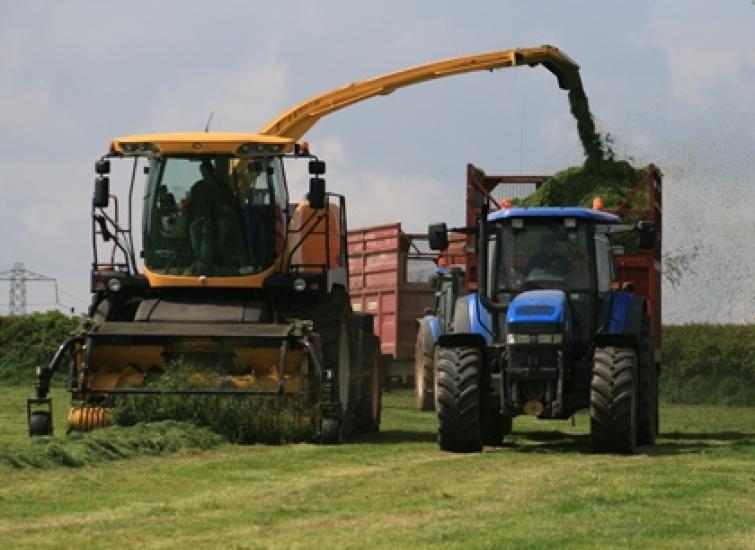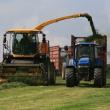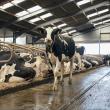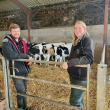Maximising Silage Quality
Mark Gorst, Ruminant Nutritionist provides some insights into making the most from your homegrown forage.

As nutritionists working with dairies nationwide, often, one of our primary goals is to optimise milk production from forage, while minimising input costs. From our perspective, balancing nutrition towards high forage diets also fits into our overall objective of improving animal health.
So, with siloing season upon us – how can we maximise the quality of our silage, preserve valuable nutrients and optimise feed efficiency for your livestock?
We’ve been working with Dr Dave Davies from Silage Solutions who was recently in the press talking about three misconceptions in the art of silage preservation, but first, let’s talk about the science…
The Science of Silage Making
Silage making is a delicate balance of fermentation, where the goal is to preserve as much dry matter and nutrients as possible. However, when dealing with high-protein silage crops such as first cuts or clover leys, the challenge intensifies. These crops contain more soluble proteins, making them prone to losses during the fermentation process.
The key lies in fostering rapid fermentation. Faster pH-drop at the onset of fermentation allows for better preservation of carbohydrates, digestible fibre, and true protein. This rapid fermentation minimises losses and ensures higher quality silage for your herd.
Feeding strategies for grass silage vary depending on factors like protein content and dry matter. When dealing with high-protein silages, minimising protein loss is paramount. This can be achieved through rapid fermentation facilitated by appropriate silage additives.
Unlocking the Potential of Silage Additives
Silage additives play a crucial role in kickstarting the fermentation process and maximising silage quality. There are two main categories of additives: homofermentative and heterofermentative bacteria.
Homofermentative bacteria focus on producing lactic acid, which accelerates fermentation, minimises dry matter losses, and preserves the nutritive value of silage. On the other hand, heterofermentative bacteria produce multiple endpoints, including acetic acid, which helps reduce yeast and mold growth. However, they come with downsides such as slower fermentation and decreased feed intake levels.
Misconceptions
Dr Dave Davies, claims there are three main errors which need highlighting…
1. Overuse of additives containing heterofermentative (HE) bacteria
Dr Davies states that HE additives are not suitable for silages below 30% dry matter (DM) and HO inoculants should only be used for these. He maintains that, in many situations, good consolidation, tight sealing, and good management of the clamp face at feed-out can minimise aerobic spoilage, negating the need for HO/HE or HE inoculants.
2. Believing silage can be treated to help manage ketosis
This goes against basics of thermodynamics, says Dr Davies. Energy cannot be created or destroyed. The energy created in propylene glycol form (produced as a by-product of HE fermentation) is far outweighed by the loss in energy overall, so there is less feed value in the clamp.
3. Telling farmers that lactic acid in silage is bad for cows.
Dave says he is alarmed some people are saying that lactic acid is bad for cows when it is an essential acid in preserving forage in silage clamps. The issue with using HE bacteria in wet silages and the extra acetic acid they produce (often 40-60% more) is that they can reduce silage DM by 4-5%, according to research calculations, he adds.
Products
Taking these points into consideration, one product that the team regularly use with success is Egalis® Ferment. Containing 1 million homolactic bacteria per gram of forage, Egalis has a high potency which enhances fermentation speed and efficiency, outcompeting undesirable microbes in the silage clamp. With this rapid fermentation, we’ve seen higher quality silage and a reduced need for additional feed supplementation.
As an independent feed company, the product we've highlighted is just one of the many solutions we can tailor to fit your unit. We’d work together to understand the dry matter content of your silage. Lower dry matter silage dilutes acids produced during fermentation, leading to slower preservation and increased nutrient losses. By selecting the right additives and managing fermentation effectively, we can mitigate these challenges and optimise feed efficiency for your herd. Just get in touch with your local Ruminant Nutritionist.
For further information, please email office@arn-ltd.com or call 015242 63139.
〈 BACK














